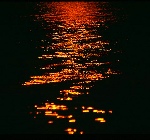Some Quick Tips
When photographing people, there are some things to pay attention to:
General
- Know your camera well before setting out on an important trip - you may not be able to repeat it!
- Know the characteristics of your film - it “sees” things differently from you! Being able to predict those differences helps prevent unpleasant surprises.
- Try to choose the best light for your subject and make the best use of the light you have.
Travel
- Bring enough film and batteries (for the camera and other items like an external flash). It may be difficult to obtain your favourite film on the road and it may have been stored incorrectly.
- Make a list of items you want to bring with you well before travelling and check that you have everything well before leaving.
- On flights, never check in film with your main luggage.
- Before photographing people, make sure that they do not object. This is not only polite - it often results in better photos.
- Respect other cultures. Try to blend in as much as possible.
We wouldn’t like a foreign photographer to intrude in our homes or disturb a church service after all... - Try learning a bit of the language. Even a few phrases may go a long way - in many countries people do not expect foreigners to do so, but are pleasantly surprised as this shows that you really take an interest.
By the way: this may result in new contacts, prices may drop and you may be able to get the consent for a picture more easily. - Read up on your destination. Use web forums, newsgroups etc. to get some first-hand information and travel tips. A very good way of finding some scenic spots not mentioned in the major guide books.
Composition
- Position your subject outside the centre, think about the “rule of thirds”.
- Learn more about the rules of composition.
- Experiment with breaking those rules.
- Eliminate unnecessary clutter. Check the background before pressing the shutter, especially for portraits.
- Get your horizon straight. You will see even small deviations from a straight line.
- Not everything has to be sharp in a picture. Try to concentrate on the main elements by reducing depth of field, especially if you have an interesting subject in the foreground (e.g. portraits)
- For good reasons, wide-angle lenses are often used for landscapes. However, this makes it especially important to look for something interesting in the foreground.
- For portraits, tele lenses usually are best. You may need a different film to produce natural skin colours. Choosing a different angle can hide or pronounce physical characteristics.
- Get close. The face is the most important part of your subject. A portrait will usually be much more impressive and personal as a close-up. Showing the whole body rarely is necessary.
- When shooting at night, use a tripod and a cable release or the self timer. A flashlight can be very handy for checking the setup and changing film etc.
If you do not have a tripod with you, try to use an elevated object like a wall instead. - When in doubt, bracket (take several shots with different exposures), especially when using slide film which is much more unforgiving of wrong exposures than print material.
- Try to shoot mainly in the morning and evening as the light usually is better for most subjects.
- In less perfect weather conditions, you may find subjects that look actually more interesting than on a sunny day. Rain, fog, the harsh light of midday and overcast skies can create very special atmospheres that will also look more “unusual” as most photographers just put away their cameras at this time...
Equipment
- A tripod is very useful for low-light situations and when using a strong tele-photo lens.
- A flash can be more helpful in broad daylight (as fill flash) than at night. Remember that the inbuilt camera flash will have a range of only a few meters.
- When using filters, always take an unfiltered version of the picture as well (except for UV or daylight filters).
- A polarising filter can eliminate reflections or enhance saturation.
- A neutral density grey filter covering the bright parts of a picture can help reduce contrast.
- A good lens is more important than a camera with many features.
Looking at your pictures
- If you buy very expensive photo equipment but then print your images on a cheap printer, you may not be doing them justice.
The lens of a slide projector is as important for the perceived image quality as is the lens of your camera. The same goes for prints, computer monitors and even the canvas you use for a slide show.

